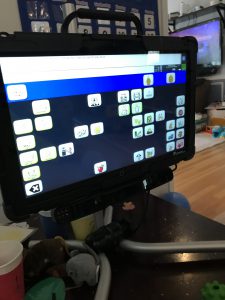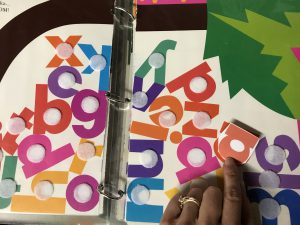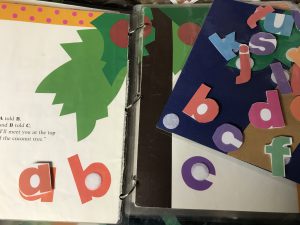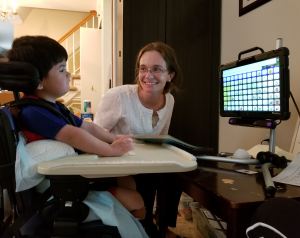 Last fall Joey started using an Augmentative and Alternative Communication (AAC) eye gaze device. But what does augmentative and alternative communication even mean?
Last fall Joey started using an Augmentative and Alternative Communication (AAC) eye gaze device. But what does augmentative and alternative communication even mean?
The AAC page on Wikipedia states, “Augmentative and alternative communication (AAC) is an umbrella term that encompasses the communication methods used to supplement or replace speech or writing for those with impairments in the production or comprehension of spoken or written language. AAC is used by those with a wide range of speech and language impairments, including congenital impairments such as cerebral palsy, intellectual impairment and autism, and acquired conditions such as amyotrophic lateral sclerosis and Parkinson’s disease. AAC can be a permanent addition to a person’s communication or a temporary aid.”

 “Buttons come and buttons…” I paused
“Buttons come and buttons…” I paused Joey’s hand hovered over mine, with a slow and thoughtful purpose. The intense stare on his face told me that he was telepathically telling his hand to stay where it was, and then open his fingers to release the foam letter he was so forcefully clutching. His focus was similar to what one observes on the faces of college math majors poring over a new problem. He was going to release this letter. Nothing would distract him.
Joey’s hand hovered over mine, with a slow and thoughtful purpose. The intense stare on his face told me that he was telepathically telling his hand to stay where it was, and then open his fingers to release the foam letter he was so forcefully clutching. His focus was similar to what one observes on the faces of college math majors poring over a new problem. He was going to release this letter. Nothing would distract him. A popular book in preschool and kindergarten classrooms is
A popular book in preschool and kindergarten classrooms is  Serve and Return
Serve and Return 
